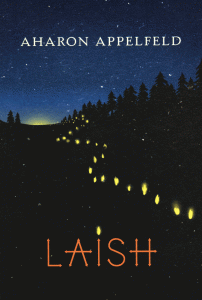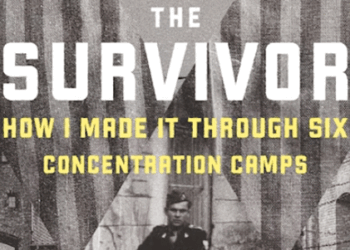Laish, by Aharon Appelfeld, Schocken Books, 240 pages, $23.95
Reviewed by MORTON I. TEICHER
Appelfeld has written many allegorical novels about the time in Europe just before the Holocaust. Most of them have been translated into English, making Appelfeld Israel’s most frequently published author in the United States.
Laish originally appeared in Hebrew in 2001. It is typical of Appelfeld’s seeming simplicity as he uses straightforward prose to describe the horrors of the pre-Holocaust period.
Laish is the name of the 15-year-old, first-person narrator who recounts the haunting story of a strange cavalcade of Jews wandering through Eastern Europe on their way to the port city of Galacz, where they plan to board a ship that will take them to Jerusalem.
The motley group is arrayed in six horse-drawn wagons that provide transportation and housing. Included in their numbers are old people who pray and study, as their ranks are inexorably thinned by death. One of them gives Laish a notebook, instructing him to maintain the record of who died since he will no longer be able to do so, correctly anticipating that he will die the next day.
Other members of the group include wagon drivers, widows, orphans, black market traders, thieves, hoodlums, musicians, and ruffians. They meander slowly while years pass, distrusting each other as they concentrate on food and money.
The wanderers appear to be replicating the long and unhappy journey of freed Israelite slaves who made their way from Egypt to the Promised Land. Just as these ancestors of ours managed to survive, so do members of Appelfeld’s bedraggled characters, kept alive by the hope that they will eventually reach Jerusalem.
Five years ago, Appelfeld published his memoir, The Story of a Life, in which he recounted his own childhood experiences just before and during World War II. He spent years hiding in the forests and eventually working in Soviet army kitchens until the war ended. At the age of 14, after living in transit camps, Appelfeld finally made his way to Palestine in 1946. Some of these experiences provide the background for the travails that are cryptically described by Laish. These include severe weather, internal wrangling, suspicious townspeople and deadly illnesses.
Â
The final chapters describe the heartrending experiences of the greatly reduced band of pilgrims in Galacz. They sell the horses and wagons but are short of the money required to buy tickets for the voyage to Palestine. Several members of the group venture out each night to rob warehouses; and during the day, the stolen merchandise is sold for cash. When more money is still needed, they obtain it by turning on a blind old man in their group who has cash sewed into the lining of his coat. The story ends with a description of this victim: “His eye sockets were as swollen and red as if his eyes had just been plucked out.”
The violence, agony and savagery that dogged the footsteps of the convoy to its very end replicate some of the experiences that Appelfeld described in his memoir. Through it all, for him, for Laish and for the band of travelers, what shines through is the determination to survive, no matter the odds. Though written without embellishment, this book is a powerful illustration of the force of faith and the will to endure.
***
Dr. Morton I. Teicher is the founding dean, Wurzweiler School of Social Work, Yeshiva University, and dean emeritus, School of Social Work, University of North Carolina at Chapel Hill.






















